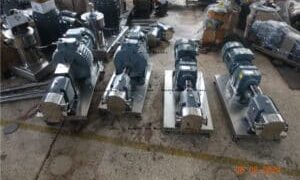In the world of digital currencies, crypto miner profit remains one of the hottest and most discussed topics. As blockchain networks evolve and the cryptocurrency market matures, miners — the backbone of decentralized ecosystems — must continuously adapt to maintain or increase profitability. From hardware upgrades to strategic energy sourcing, the landscape of crypto mining in 2025 is more competitive and complex than ever.
Understanding Crypto Miner Profit
At its core, crypto mining involves solving complex mathematical puzzles to validate transactions on a blockchain network. In return, miners receive cryptocurrency rewards — most famously Bitcoin — and transaction fees. Crypto miner profit is calculated as the revenue from these rewards minus the cost of mining operations, including electricity, hardware, maintenance, and cooling.
The profitability equation is influenced by several key factors:
- Cryptocurrency market price
- Mining difficulty
- Electricity cost
- Hash rate
- Block reward
Even slight shifts in any of these variables can significantly impact overall returns.
The State of Mining in 2025
Crypto mining is no longer the realm of hobbyists using home rigs. In 2025, the industry is dominated by industrial-scale operations and mining farms that leverage economies of scale. With Bitcoin’s halving event in 2024 cutting block rewards from 6.25 BTC to 3.125 BTC, crypto miner profit margins have tightened, forcing miners to innovate and optimize.
The halving has pushed miners to focus on:
- High-efficiency ASICs (Application-Specific Integrated Circuits)
- Low-cost renewable energy sources
- Geographical relocation to areas with favorable regulations and cheaper electricity
Moreover, altcoin mining has gained traction again, especially with coins that are ASIC-resistant or that provide higher short-term yields than Bitcoin.
Key Strategies to Maximize Crypto Miner Profit
1. Choosing the Right Hardware
Hardware directly affects a miner’s hash rate and energy consumption. In 2025, top-performing ASIC miners such as Bitmain’s Antminer S21 and MicroBT’s WhatsMiner M60 dominate the market. These machines deliver superior performance-per-watt, which is essential in maintaining crypto miner profit amid rising difficulty and falling rewards.
Miners must regularly assess hardware performance and ROI. Obsolete machines that consume too much electricity without yielding sufficient returns can drag down overall profits.
2. Energy Cost Optimization
Electricity is often the largest operational expense. To maximize profit, many miners have moved operations to countries or regions with:
- Surplus hydroelectric power (e.g., Scandinavia, Canada)
- Geothermal energy (e.g., Iceland)
- Off-grid solar and wind farms
Some have even partnered with energy companies to utilize excess or stranded energy — energy that would otherwise be wasted — at lower costs. This strategy not only boosts crypto miner profit, but also supports greener mining practices.
3. Mining Pools vs. Solo Mining
Most miners today participate in mining pools, where they combine resources to increase the chance of earning block rewards. Profits are then distributed proportionally based on contributed hash power. This reduces the volatility of income compared to solo mining, which can result in long periods with no rewards.
For small to mid-sized operations, joining a reputable mining pool remains the best way to ensure a steady income and maximize profit.
4. Diversification
Relying solely on Bitcoin mining can be risky. Many miners are diversifying into other proof-of-work cryptocurrencies like Litecoin, Kaspa, and Ethereum Classic. Some are even branching into proof-of-stake (PoS) or liquid staking, using their profits to earn yield from holding rather than mining.
This hybrid approach allows miners to hedge against market volatility and shifts in mining difficulty, boosting their overall crypto income.
Challenges to Crypto Miner Profit
While opportunities exist, miners also face growing challenges:
- Regulatory uncertainty: Some governments have banned or restricted mining due to environmental concerns or power usage.
- Climate change policies: The move toward net-zero emissions may impact large-scale mining operations powered by fossil fuels.
- Increased network difficulty: As more miners join the network and hardware improves, mining difficulty increases, requiring even more computational power.
These factors mean miners must remain agile, informed, and ready to pivot.
The Future of Crypto Mining Profitability
Looking ahead, the path to sustainable crypto miner profit lies in innovation and strategic decision-making. Integration with AI for optimizing mining operations, further shifts toward renewable energy, and the development of decentralized mining protocols are all on the horizon.
Additionally, the rise of layer-2 solutions and modular blockchains may create new forms of mining or validation that go beyond traditional proof-of-work models, potentially opening up fresh revenue streams for technically savvy miners.
Final Thoughts
Crypto miner profit in 2025 is far from guaranteed, but with the right mix of technology, strategy, and adaptability, mining can remain a lucrative venture. Whether you’re a solo miner or running a farm with thousands of rigs, staying informed about market trends, energy developments, and blockchain innovations is essential to mining success.
In an industry where seconds matter and margins are thin, those who optimize relentlessly — and mine smart — will come out on top.



























